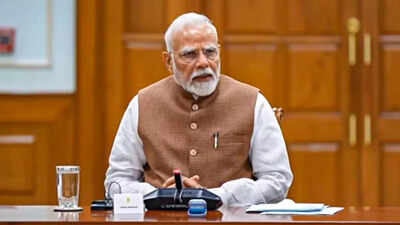Nellore : The majestic 7th-century Western Rajagopuram of Sri Talpagiri Ranganatha Swamy Temple, standing tall on the banks of the Pennar River at Ranganayakula Pet, is facing an imminent threat of collapse. This ancient structure, steeped in history, could meet the same tragic fate as the 15th-century Srikalahasti Rajagopuram, which crumbled on May 26, 2010.
For centuries, devotees visiting the Ranganatha Swamy Temple have passed through the Western Rajagopuram for ritualistic cleansing in the sacred Pennar River. The temple’s goshala, located in front of this ancient structure, further emphasises its significance. However, the growing structural instability has alarmed both devotees and conservationists alike.
The situation is even more concerning for those performing pradakshinas (ritualistic circumambulations), as they must traverse a narrow five-foot passage behind the Rajagopuram. Despite the visible dangers, neither the temple administration nor political leaders have taken decisive action to address the issue.
The reluctance to initiate restoration efforts stems partly from religious sentiments. Many believe that any attempt to renovate the Rajagopuram could bring misfortune, a fear magnified by interpretations of ‘Kala Gnanam’—the prophecies of the revered spiritual seer, Srimath Virat Pothuluri Veerabrahmendra Swamy.
Even though notable figures such as Nellore MP Vemireddy Prabhakara Reddy and philanthropist Althuri Mahesh Reddy initially showed interest in renovating the structure, they ultimately withdrew, citing these reli-gious sentiments. Tragedies linked to the tower, such as the accidental death of an electrician who fell into the Pennar River after illuminating the Rajagopuram during Brahmotsavams three years ago, have further fueled superstitious fears.
Historians trace the temple’s origins to the 7th century AD, when it was constructed by Emperor Kasyapa. In earlier times, the Western Rajagopu-ram, which directly faces the Pennar River, served as the temple’s prima-ry entrance. The 30-foot-tall structure is adorned with intricate sculp-tures of deities and celestial beings, showcasing the remarkable crafts-manship of its time. Locals fondly recall the saying, ‘Penna dathite Perumalla Seva’, referring to the necessity of crossing the Pennar River to visit the temple from the western side. Over time, the temple’s Eastern Rajagopuram, standing at 96 feet and built in 1781 by Bagadapati Venkatachalam Panthulu, be-came the main entrance.
Despite past restoration efforts—such as the Rs 20-lakh repair of the Eastern Rajagopuram after a falling figurine injured a devotee in 2002—no such measures have been taken for the Western Rajagopuram. Even when Anam Ramanarayana Reddy, as the Endowments Minister, visited the temple, he dismissed the restoration as too risky, deferring any deci-sion until consultations with Agama and Vedic scholars.
With thousands of devotees frequenting the temple, the risk posed by the deteriorating Rajagopuram cannot be ignored. Worshippers continue to pass under the aging structure for holy ablutions in the Pennar River, unaware of the looming danger.
Devotees have now appealed to Andhra Pradesh Chief Minister Nara Chandrababu Naidu, urging him to intervene before tragedy strikes. A temple as historically significant and spiritually revered as Sri Talpagiri Ranganatha Swamy Temple deserves preservation, not neglect. Restora-tion efforts, if initiated with proper planning and reverence for tradition, could safeguard this timeless architectural marvel for future generations.







